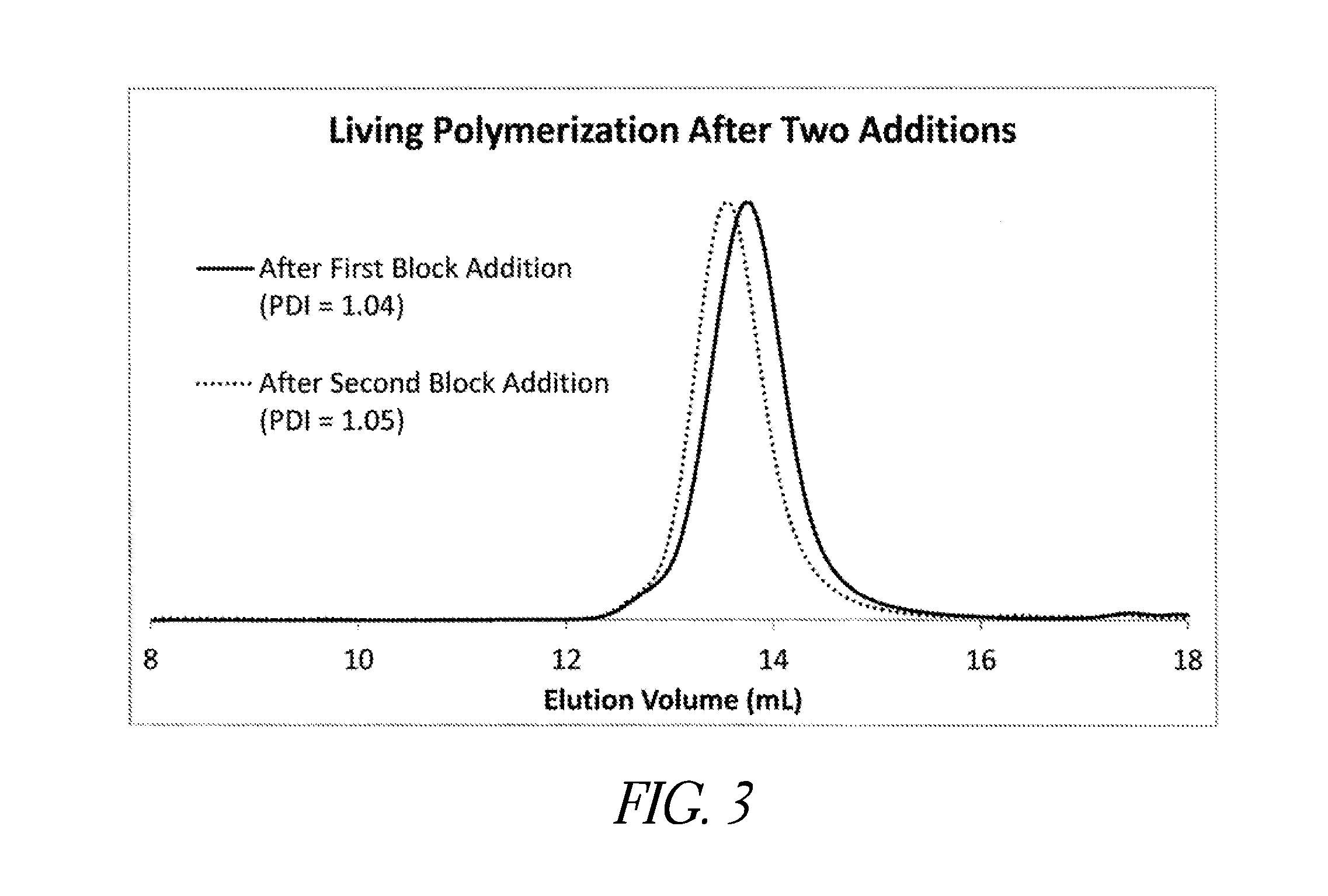Compositions and uses of antimicrobial materials with tissue-compatible properties
a technology of antimicrobial materials and tissue, applied in the field of compositions and uses of antimicrobial materials with tissue-compatible properties, can solve problems such as determining effectiveness in tissues, and achieve the effect of effectively coating tissues
- Summary
- Abstract
- Description
- Claims
- Application Information
AI Technical Summary
Benefits of technology
Problems solved by technology
Method used
Image
Examples
example 1
[0079]As depicted in FIGS. 14-16, embodiments of synthetic cationic polypeptides were shown to retain substantially all of their antimicrobial activity in the presence of other pharmaceutically-acceptable polymers, as demonstrated by in vitro time-kill assays against S. aureus, S. epidermidis, P. aeruginosa, and E. coli. In these studies, a variety of cellulose-based second polymers were evaluated. As shown in FIGS. 11 and 13, other studies demonstrated retained antimicrobial activity in in vitro the presence of other pharmaceutically-acceptable (polymeric surfactants). In an embodiment, the antimicrobial activity of the aqueous composition is greater than 3 logs killing of Staphylococcus epidermidis and Escherichia coli in standard 60 minute time-kill assays at a synthetic cationic polypeptide(s) concentration of 100 μg / mL or less. In another embodiment, the aqueous composition is further characterized by the ability to disrupt or inhibit a biofilm in vitro at a total polymer conce...
example 2
[0082]A texture analysis profile has been used to determine the effects of block copolypeptide composition and hydrophobic enantiopurity on the mechanical properties of the block copolypeptide / HEC mixtures (FIG. 20). Measurement of firmness values for individual components indicated that a 1 (w / w) solution of K100L40 in water had a firmness of 2.94+ / −0.25 mN and a solution of 1% (w / w) HEC in water demonstrated a firmness of 5.38+ / −0.32 mN (FIG. 21 (Table 5)). Mixing 1% (w / w) K100L40 and 1% HEC (w / w) together resulted in a substantial increase in firmness, to a value of 22.77+ / −0.90 mN. This corresponds to an interaction parameter value of 14.45 mN and an overall increase of over 170% over what would be expected from the additive contributions of the individual components. As shown in FIG. 20b, a similar trend was observed for adhesiveness. By comparison, the combination of the diblock copolypeptide K100(rac-L)40 (containing a racemic hydrophobic block) at 1% (w / w) and HEC at 1% (w / w...
example 3
[0083]Rheological measurements further support the synergistic interactions between K1004) and HEC. In FIG. 22, effects are seen in both the oscillatory strain sweep and frequency dependent sweep. By itself, 1% (w / w) K100L40 showed characteristics of a relatively brittle, weak gel. In strain sweep analysis, the brittle nature of the gel was observed by the breakdown of the gel network at low strain rates around γ=0.01; and frequency sweep analysis indicated the formation of a weak gel with an elastic modulus (G′=22 Pa at 1 rad / s). By comparison, 1% (w / w) HEC showed rheological properties more characteristic of a viscous fluid. Strain sweep analysis of a 1% HEC solution demonstrated a higher loss modulus (G″) than elastic modulus (G′) throughout all strain rates tested (FIG. 21A) and the frequency sweep also showed higher G″ over G′ values until higher frequencies (ca. 100 rad / s) were reached (FIG. 21B). Substantial changes in rheological properties were observed upon mixing 1% (w / w)...
PUM
| Property | Measurement | Unit |
|---|---|---|
| concentration | aaaaa | aaaaa |
| concentration | aaaaa | aaaaa |
| concentration | aaaaa | aaaaa |
Abstract
Description
Claims
Application Information
 Login to View More
Login to View More - R&D
- Intellectual Property
- Life Sciences
- Materials
- Tech Scout
- Unparalleled Data Quality
- Higher Quality Content
- 60% Fewer Hallucinations
Browse by: Latest US Patents, China's latest patents, Technical Efficacy Thesaurus, Application Domain, Technology Topic, Popular Technical Reports.
© 2025 PatSnap. All rights reserved.Legal|Privacy policy|Modern Slavery Act Transparency Statement|Sitemap|About US| Contact US: help@patsnap.com



